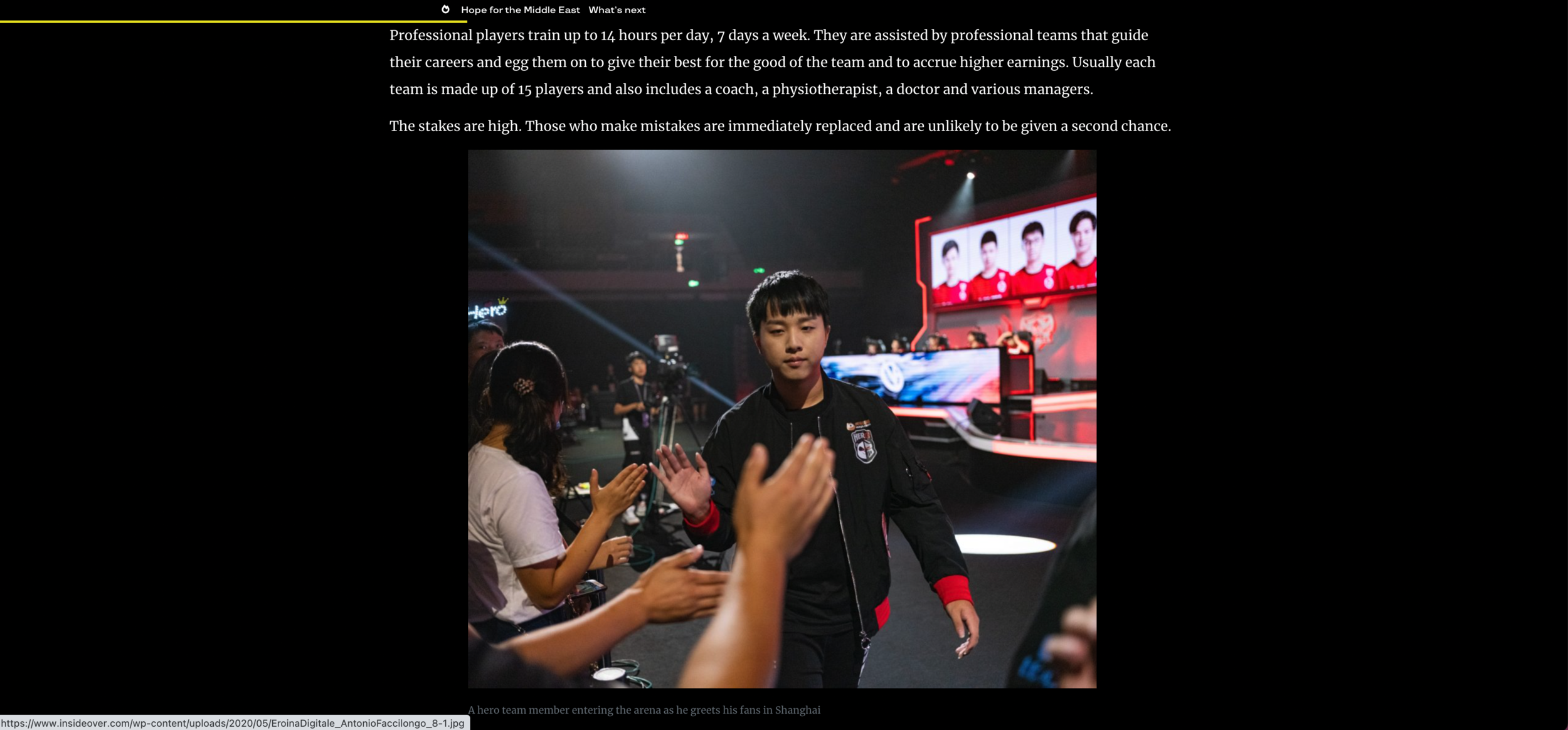DIGITAL HEROIN
In 1997 there were 300,000 computers in China and 620,000 citizens were able to surf the web. Now, over two decades later that number has exploded. According to the government agency China Internet Network Information Center, 802 million Chinese people now have access to internet, making China the world’s largest online community. But in recent years, another figure has also mushroomed: the number of people addicted to internet and online gaming. In 2019, the number of young victims of this addiction totaled 24 million.
As our sources in China say, with the global spread of coronavirus, which began in the city of Wuhan in China, and the consequent isolation, all forms of addiction have increased across the country. The emotional stress citizens are subjected to amplifies the old addictions. This is particularly true of internet and online gaming addiction.
There are some 198 million e-sports fans worldwide, with around 75 million living in China. This is the largest concentration of fans globally.
The economic interests at stake are high. It is estimated that the Chinese video game industry alone is worth $30 billion in annual revenues and currently involves over half a billion people. In recent years, the gaming industry lobbyists have even attempted to have e-ports included at the Olympics, so far without success.
Professional video game competitions have existed for many years, but their expansion in the last five years has been exponential. These competitions began as niche events for players who wanted to test their skills. Gradually tournaments have taken place within ultra-modern arenas with thousands of screaming fans and mind-boggling jackpots that can reach several million Euros.
Professional players train up to 14 hours per day, 7 days a week. They are assisted by professional teams that guide their careers and egg them on to give their best for the good of the team and to accrue higher earnings. Usually each team is made up of 15 players and also includes a coach, a physiotherapist, a doctor and various managers.
The stakes are high. Those who make mistakes are immediately replaced and are unlikely to be given a second chance.
The career of these athletes begins early, at around 15 years old, but it also generally burns out in a flash, usually by the time they are around 23. This happens because the hype and stress prompts players to drop out and pursue a different lifestyle. Another reason is that by 23 cognitive reflexes begin to decline and performance suffers.
The stakes and level of professionalism in this sector are so high that some Chinese universities have launched special courses in e-sports to train future champions. Here, the students mainly study advanced gaming techniques. After the first year they are divided into different classes. The best ones focus on becoming professional players while the others are taught the administrative, financial, promotional and planning part of the business.
Growing numbers of young people in China dream of becoming professional e-sports athletes. But only a small number will really make it. And many of them run into serious problems in trying to achieve their dream. In 2008, the first country to declare internet addiction a clinical disorder was China, de facto recognizing the danger of internet addiction to people and society.
Many young Chinese people spend almost their whole lives in internet cafés, where they can surf and play online. They completely lose all sense of time and space, finding it hard to stop playing and reconnect with reality. They spend whole days or nights connected playing League of Legends or Counter-Strike, which are two leading games in the sector. Deaths from heart attacks and strokes are now common and the numbers are growing. They are largely caused by ever stronger addiction and tournaments that keep body and mind at high stress levels that can last up to 40 consecutive hours nonstop. Sometimes, to avoid leaving their screens, the young people even wear sanitary pads and adult diapers.
This compulsion, often likened to heroin addiction, is currently affecting a whole generation of young Chinese men and women. Beijing has taken some steps to try and curb its effects. For instance, a law has been enacted that regulates the length of gaming sessions by a single player. The result is that “zapping” has become common. The time limit on video gaming is eluded by jumping from one game to another using the maximum number of minutes allowed but on an almost unlimited number of games, effectively nullifying the measure.
In the late 1990s when the problem barely existed, the first rehabilitation centers were set up in China to cope with the disorder. Today they are widespread across the country, hosting thousands of children and teens sent by their families in search of a cure. These camps resemble basic training military basic facilities. The inmates wear camouflage suits, they’re drilled for hours like soldiers and are trained to overcome obstacles and withstand hardships.
Rigor and discipline are paramount. Those who break the rules risk solitary confinement. On many occasions such centers have been criticized for the harshness of their treatments. One center became notorious after it emerged they were using electroconvulsive therapy to treat some intense forms of addiction. Over the years, stories of abuse have prompted the Chinese government to regulate them more carefully. The Zheng Xin center in Weifang is one of the most important in China for diagnosing and treating internet addiction.
The Zheng Xin center consists of several buildings with classrooms, a gym, offices, a canteen, dormitories, a hall for presenting shows, a cinema and a courtyard where the inmates perform athletic exercises. Electronic devices of all kinds are banished from the camp. The treatment consists of a combination of drug therapy, psychological counselling, exercise and activities with family members, whom the inmates can meet once a month. The duration of the treatment is unpredictable. It generally lasts at least 6 months, but there are cases of young people who have been interned for up to 2 years.
Day at the camp begins at 6 a.m. After the usual cleaning and the Marines-style roll call of standing to attention, training begins. First, campers march at an impeccable rhythm and then do gymnastics to activate body and mind. At the end of this first phase, they all run to the canteen where they will eat a well-earned breakfast.
During the rest of the day they practice physical activities, such as Tai Chi, gymnastics, running, walking, yoga, and artistic pursuits such as singing, acting, drawing and other relaxing activities. The dormitories are spartan and functional. The bunk beds have thin mattresses and there are straw mats in each room. After dinner the inmates wash their uniforms and then it’s lights out.
The damage being inflicted on the younger generation hardly seems to interest the e-sports industry. It’s too focused on maximizing its profits. But today above all, given the situation created by the global health crisis, it is vital for health programs to put the well-being of these young people first.
They are — and always will be — the main source from which the world grows and from which it will have to start again.
Text, photos and videos by Antonio Faccilongo.
WEB DOCUMENTARY VIDEO
TEARSHEETS








SUBSCRIBE NEWSLETTER


























